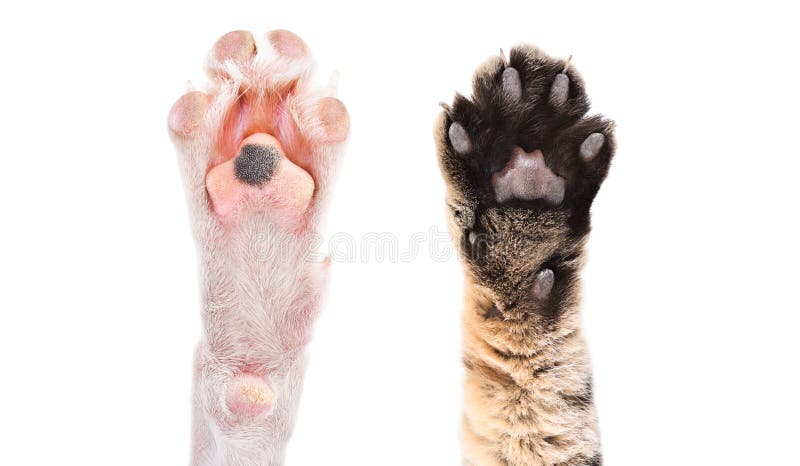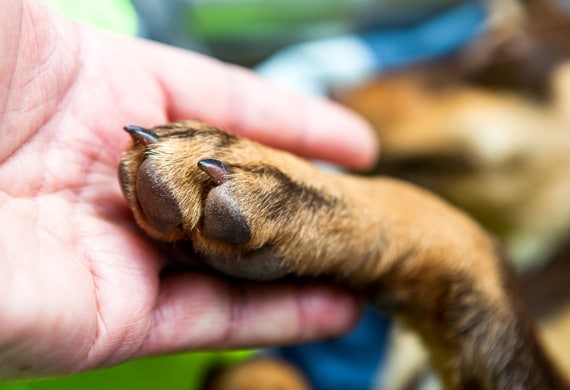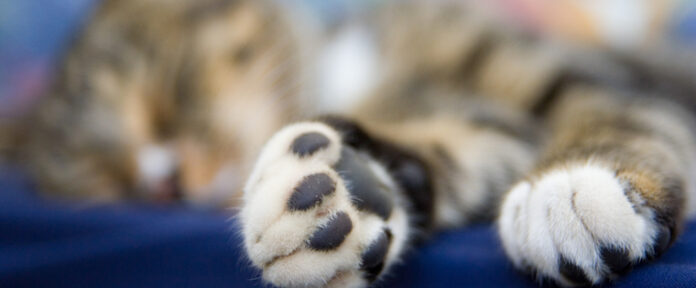Last Updated on February 25, 2024 by Fumipets
Differences between cat Paws and Dog Paws
Dogs and cats both have four paws that enable them to move around, cushion their body weight, and handle things. While the paws of Fluffy and Fido may seem to be identical at first sight, a deeper examination shows a number of variances.
Pads
Cats and dogs have cushioned pads on the bottoms of their feet. The front paw of your cat has seven pads. Five of them are digital, like a person’s toes. A big pad on the heel (named the plantar pad) and a tiny one on the wrist (called the carpal pad) are also present. Your dog, on the other hand, has six pads: four digital pads, one on the heel, and one on the carpal region. On the inside of each front leg, your dog possesses a dewclaw, which is also known as a dog’s thumb. The ground is never touched by the dewclaws.

Shape
The canine paw has an oval overall form, while the feline paw has a circular overall shape. The dog’s pads are triangular, whereas the cat’s are teardrop-shaped. If you look at your cat’s big heel pad, you’ll see that the rear edge has three lobes and the front edge has two lobes. When you pick up your dog’s paw, you’ll see two lobes on the rear edge of the heel and one on the front. You’ll also see that the centre pad of your kitty’s five digital pads is somewhat ahead of the surrounding pads, while your dog’s two middle digital pads are aligned and near together if you keep it steady long enough.

Nails And Claws
Cat claws are retractable, which means they may be extended or sheathed. The claws are sheathed when a cat is calm, strolling or playing softly. However, if your cat requires a tool or weapon to dispatch that mouse, the claws will be expanded. Your dog’s nails, on the other hand, are constantly elongated, comparable to a person’s fingernails.

Using The Paws
Paws on cats and dogs are used for more than just walking. Dogs can move things, dig trenches, and wow your guests with a friendly shake, all while sweating from their paws. Kitties are unlikely to shake hands with your visitors, but they can climb, use their paws as weapons, and shred food with them (or perhaps, on occasion, things in your home best left un-shredded).

















